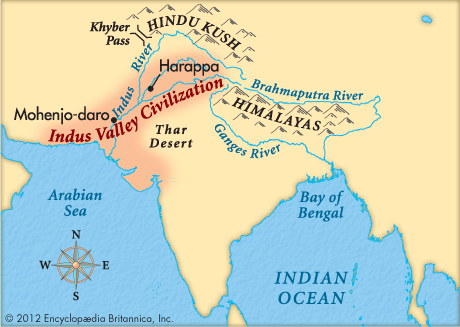Vernacular Scripts of the Indus Valley and Beyond
 The following exciting workshop is taking place at the British Library. Come and be a part of it:
The following exciting workshop is taking place at the British Library. Come and be a part of it:
Vernacular Scripts of the Indus Valley and Beyond
Friday, 20 May 2016
The Eliot Room, British Library Conference Centre
London
10:15 Welcome and Opening Remarks – Nur Sobers-Khan (British Library)
10:30 – 11:15 Personal Reflections and Observations on the Indus Valley Scripts
Christopher Shackle, SOAS (London)
11:15 – 12:00 An Anthropological Perspective on the Khūdāwādī script
Michel Boivin, Center for South Asian Studies, CNRS (Paris)
12:00 – 13:00 Break for lunch
13:00 – 13:45 The unexplained sectarian nature of the revolts of the Tughluq Era in Medieval Sindh Hasan Ali Khan, Habib University (Karachi)
13:45 – 14:30 Manuscripts in Khojki Sindhi Script: A State of the Art
Zahir Bhalloo, Centre for South Asian Studies, CEIAS (Paris)
14:30 – 15:00 Break for coffee
15:00 – 15:45 Preliminary observations on the British Library’s Khojki manuscript from Zanzibar Iqbal Akhtar, Florida International University (Miami)
15:45 – 16:00 Concluding remarks and discussion
Abstracts
An Anthropological Perspective on the Khūdāwādī script
Michel Boivin, Center for South Asian Studies, CNRS (Paris)
After a brief introduction to the Khūdāwādī, the presentation will deal with a salient question: why did the Khūdāwādī fail to be constructed as a community script as the Khojkī was with the Khojas and the Gurmukhī with the Sikhs ? Yet the script was usually associated with the Lohāṇās, a leading ‘Hindu’ community mostly involved in trade, but also counting as the bulk of the Daryāpanthīs, the devotees of the Indus River worshipped as Udero Lāl. Using published matter kept in the British Library collection as well as the scattered epigraphical corpus collected in Sindh, it will argue that although there have been some attempts involving different actors for it to be constructed as a community script, the Khūdāwādī is still used in present Sindh as it was probably since long, as a writing system for shopkeepers’ account books.
The unexplained sectarian nature of the revolts of the Tughluq Era in Medieval Sindh
Hasan Ali Khan, Habib University (Karachi)
Manuscripts pertinent to (larger) Sindh (including Multan)-and to the southern half of the country of Pakistan are roughly divisible into two categories, the Persian (rarely Arabic), and the Sindh/vernacular; it is the former that contain information that is of greater (undiscovered) value-as the Sindhi language sources are better cataloged and consulted by local intellectuals and academics, due to their ability to read them. I intend to use the occasion to mainly familiarize myself with the former category of sources, to try to pin down the sectarian (Shi’a-Isma’ili) nature of the many revolts that were suppressed in Sindh and Multan during the Tughluqid era, by Muhammad bin Tughluq (r.1325-1351). This is in addition to unearthing clues to his reported (first) burial in the city of Sehwan by his heir Firuz Shah-as atonement for his excess.
Manuscripts in Khojki Sindhi Script: A State of the Art
Zahir Bhalloo, Centre for South Asian Studies, CNRS (Paris)
This paper presents an overview of research on the corpus of manuscripts from south of the Indus valley in Khojki Sindhi script (18th-20th centuries). After a general introduction to the significance of these manuscripts, we will look at how researchers have approached the question of the origins of the “Khojki Sindhi” script and its relation to the religious tradition of the Khoja merchant caste of Sindh and Gujarat. Then, we systematically present the main cataloguing attempts and studies from 1964 onwards on the 1/paleography, 2/codicology, 3/textual content and 4/illustrations of these manuscripts. Finally, we summarize ongoing research and suggest new directions for future work on these manuscripts.
Preliminary observations on the British Library’s Khojki manuscript from Zanzibar
Iqbal Akhtar, Florida International University (Miami)
To begin exploring the ‘conversion’ of the western Subcontinent, this proposed project shall be an in-depth case study of the Muslim Khōjā caste through translation of a nineteenth century manuscript which chronicles early modern Islam from Sindh and Gujarat to Zanzibar. The collectanea manuscript (giranth jō cōpaḍō), to be translated, was sent to the settled Khōjā community of Zanzibar in Cētri 1909 V.S. (March 1852 C.E.) at the behest of the leader of the Zanzibar community by the chief of the Bombay community, Abdalā Khī’ātē Rāmijī’āṇī. Among the remarkable aspects of this 955-page collectanea manuscript, written by the ‘humble scribe Dāhī’ā Surijī’, is the juxtaposition of ‘Hindu’ books alongside those inspired by Near Eastern Islamic texts. The collection of books in this manuscript chart the processes by which the shift from an Indic spiritual geography to a Near Eastern one occurred. This text is the earliest comprehensive publically accessible manuscript on Khōjā religion and provides a valuable touchstone against which one can compare later Khōjā texts, which underwent a series of redactions and interpolations in the twentieth and twenty-first centuries.
For any further information, please contact nur.sobers-khan@bl.uk. There is no registration, and the event is free to attend.
